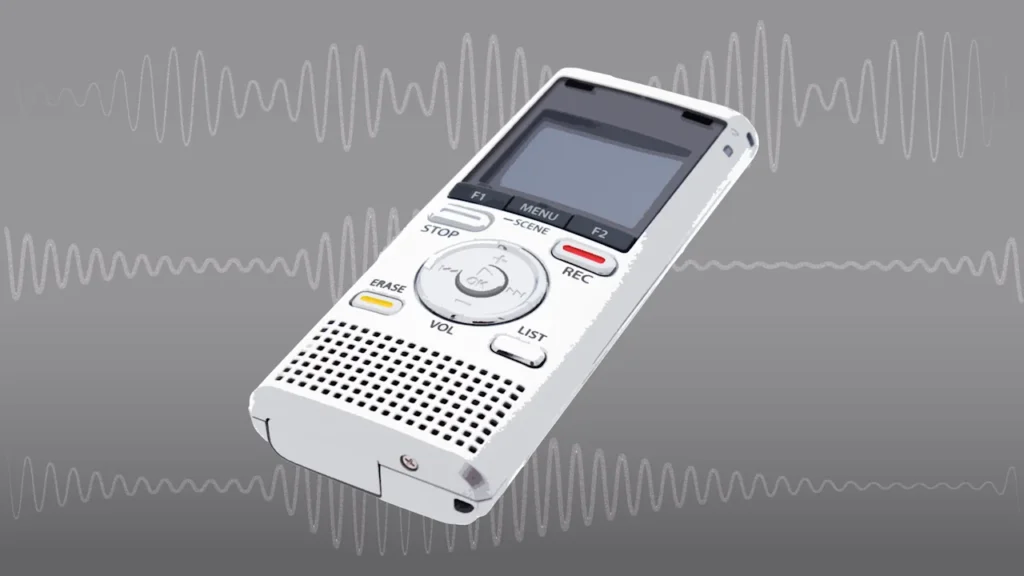
From my earliest days as a journalist, I’ve always prized my dictaphone. It sounds quaint now, but I actually remember excitedly keeping up with advancements in the field. Sony’s ICD-TX50 was a particular revelation for me in 2012, with its tiny OLED display and world’s-thinnest 6.4mm frame. There was no sleeker way to show up to Tokyo press conferences.
In recent years, though, my dictaphone collection has taken on a new, less physical form. Google’s Pixel phones have been a revelation for journalists, offering real-time, on-device transcription through the Recorder app. I’ve often found myself bringing a Pixel along to a press event even if I wasn’t actively using it as a phone at the time—the ability to get an automatic transcript once your recording is done has been an incredible timesaver.
But now a new wave of hardware, buoyed by the AI revolution, has been changing my habits once again. While the jury is out on a lot of hyped AI devices, some startups have locked in on voice recording as one of the few serious use cases. These aren’t like the Humane AI Pin or the much-mocked Friend pendant—they’re gadgets with a focused, real-world use case.
The devices
I’ve been using a couple of recorders from Plaud for several months—the Plaud Note and the Plaud NotePin—and testing them against a product from a newer Japanese startup called Notta. At least for now, I’ve found that both companies’ devices offer a significant upgrade over the Pixel for working journalists.
The Plaud Note is an incredibly thin audio recorder that can magnetically attach to an iPhone or a newer Pixel through an included leather case. There’s a simple record button, as well as a switch for a mode that lets you record phone calls through audio vibrations. (Obviously, you should make sure of the legality in your jurisdiction before using this feature.)
The NotePin, meanwhile, is a small pill-shaped device that attaches to various magnetic accessories like a clip or a wristband. It’s designed for hands-free use, as opposed to holding the Plaud Note out toward a subject or resting it on a desk.
Both devices feel very well-built, with solid metal cases. Power and recording status is indicated on each through a tiny LED in the A of the “Plaud” logo. The Note is a little easier to use than the NotePin thanks to its tactile round power button; the NotePin relies on an invisible capacitive surface that you have to hold down until you hear a vibration, which isn’t quite as convenient in situations where you’re scrambling to start a recording.
The NotePin does have a usability advantage of its own through its magnetic USB-C charging adapter, however. The Note is so thin that it requires a proprietary pogo-pin cable, which I’m not sure I trust myself not to lose at some point.
Overall Plaud has designed some attractive hardware, but given that every phone has a microphone built in, the app is what sets the product apart. Once your phone is paired to one of the devices, transferring audio files is simple and quick over Wi-Fi, and then you have to upload them to Plaud’s cloud servers for processing.
This can take several minutes depending on the length of the file, though it’s still much faster than manually transcribing. What I’ve really appreciated in the chaotic aftermath of press conferences is how Plaud automatically generates a summary of the recording and identifies speakers, so you can dial right into the most important parts and verify the quotes for yourself. The auto setting works well, but you can also choose from specific templates and AI models like GPT-5, Gemini 2.5 Pro, and so on.
Plaud’s free plan offers 300 transcription minutes a month. You can top up with 600 extra minutes for $12.99, or there’s a $100 annual “Pro” plan with 1,200 minutes a month. The unlimited plan will set you back $240 a year. Meanwhile, the Plaud Note and NotePin each cost $159 themselves.
I think this is reasonable pricing for anyone using this as a professional service. I did find Plaud’s app to be a little fussy in use, however, requiring a fair amount of interaction on the part of the user when it comes to uploading files and selecting how they ought to be processed. Despite its access to several AI services, I also thought the lack of in-app translation was an obvious miss.
The Notta option
That’s what got me interested in a Japanese startup called Notta, which is making a very similar product to the Plaud Note called the Notta Memo. I suspect each company may have related supply chain contacts in China, because the resemblance really is uncanny—even the magnetic leather cases and charging cables are near-identical.
The Notta Memo does add a tiny monochrome OLED screen that shows useful information like recording status, and more importantly reminds me of my Sony dictaphone. (Plaud has since released a “Note Pro” model with a similar display, though I haven’t yet tested it.) Personally I think the Notta Memo looks sleeker, with a black finish and a geometric, quilted diamond texture.
While Notta’s app is similar to Plaud’s, I also preferred its design. Files begin transcribing automatically after transfer, and you can also translate them right within the app itself, which saves an extra step when you’re on the move. I used the Notta Memo while reporting at some recent sports events in Tokyo and the process of recording directly on the device, uploading the file and getting a translated, annotated transcript that I could check myself was seamless.
Notta slightly undercuts Plaud with subscription pricing, charging $98 a year for 1,800 minutes a month or $200 for the unlimited plan, and the Notta Memo device itself is $149. Notta’s free plan only offers 120 minutes a month, though, and doesn’t support longer recordings or transcript translation, which complicates the comparison for anyone unsure of how much they’ll use it.
Worth the cost
Overall, any one of these devices is going to be a serious investment. But for working journalists or other professionals—maybe lawyers or consultants—where voice recordings are a daily need, I actually think they’re all quite compelling.
If you have a Pixel phone, sure, you might get by with the built-in transcripts most of the time. But the advantages of having dedicated hardware are real. You can press the record button at any time regardless of what you’re doing on your phone. The NotePin is a unique form factor that expands the situations in which you can rely on being able to record. Call recordings, meanwhile, straight-up aren’t supported in phone operating systems.
The hype around AI has led to a lot of hardware startups that haven’t been able to live up to it. But one thing AI is indisputably very good at is understanding language, and these voice recorders are perfect for the task. If there’s a use case for AI-first hardware right now, it’s this.

